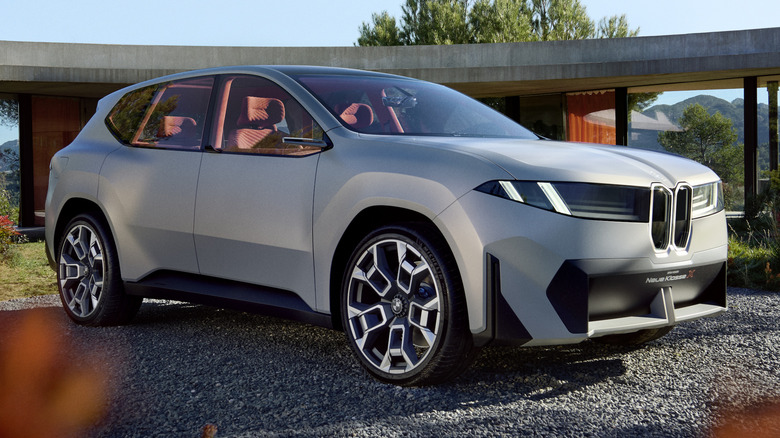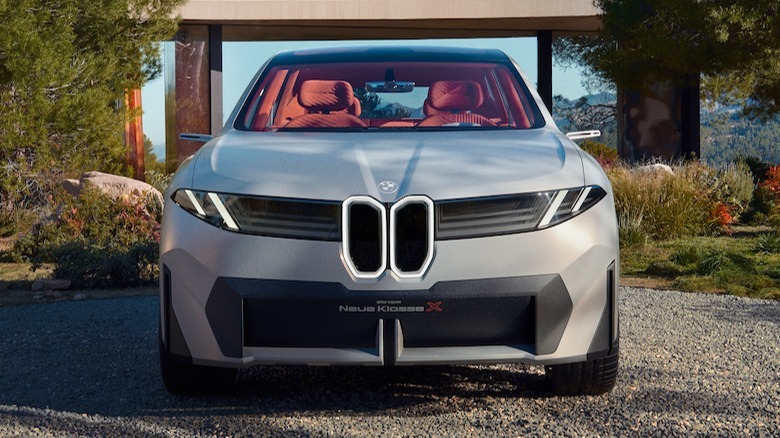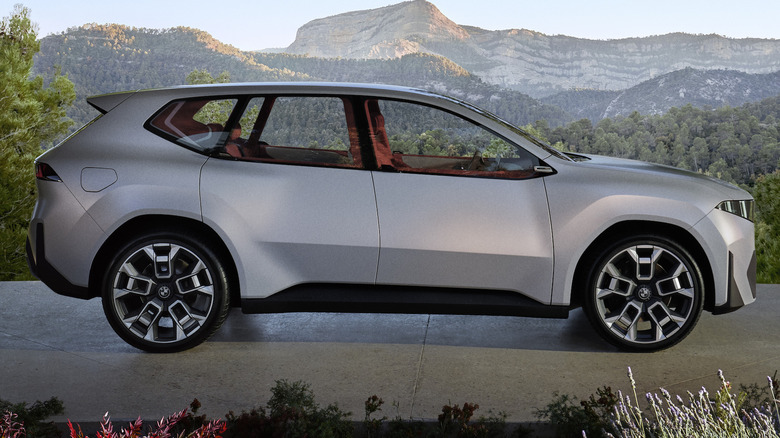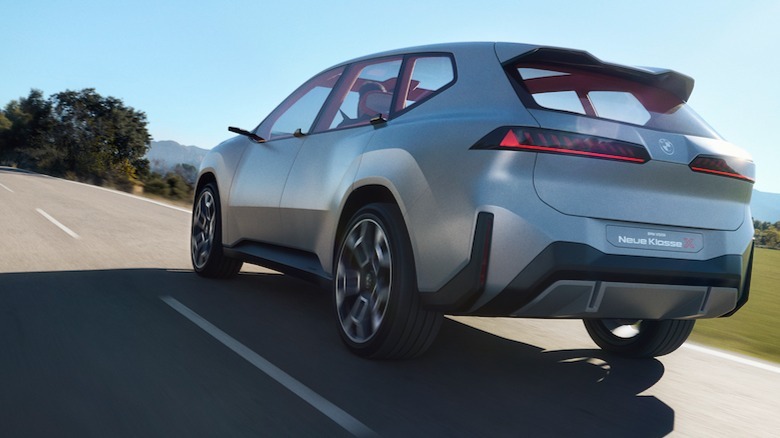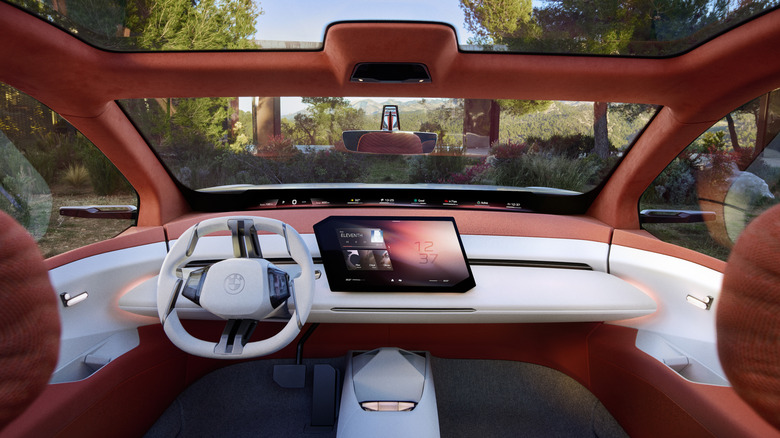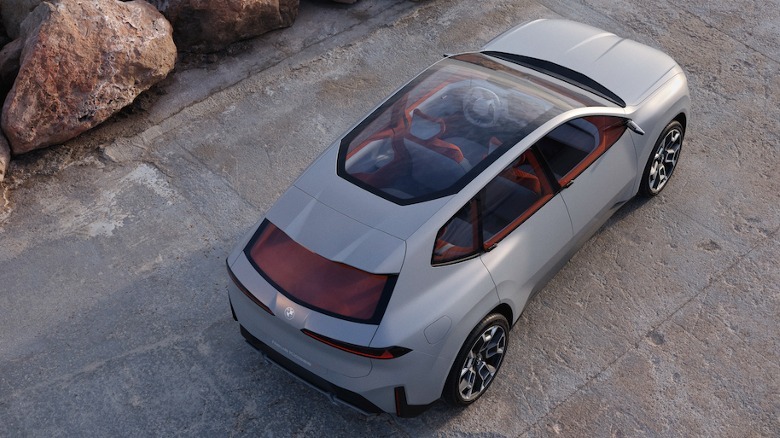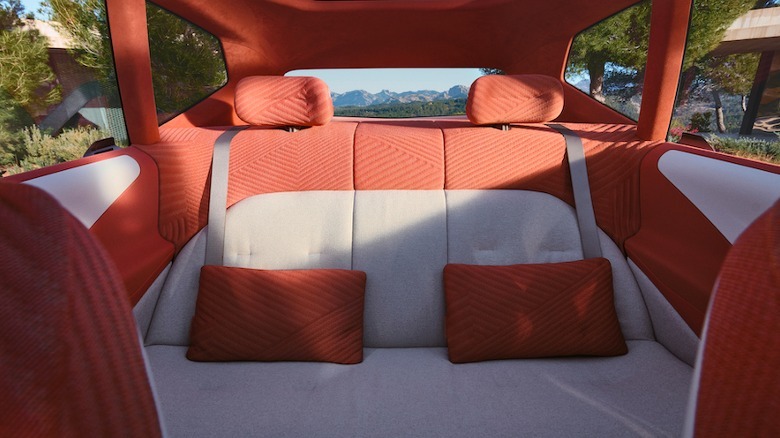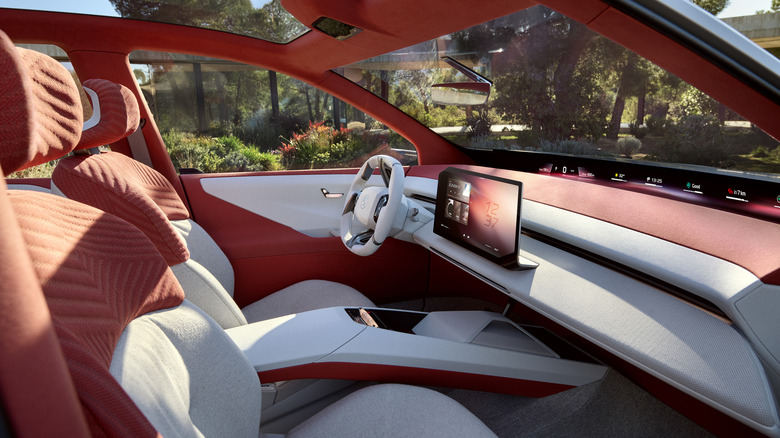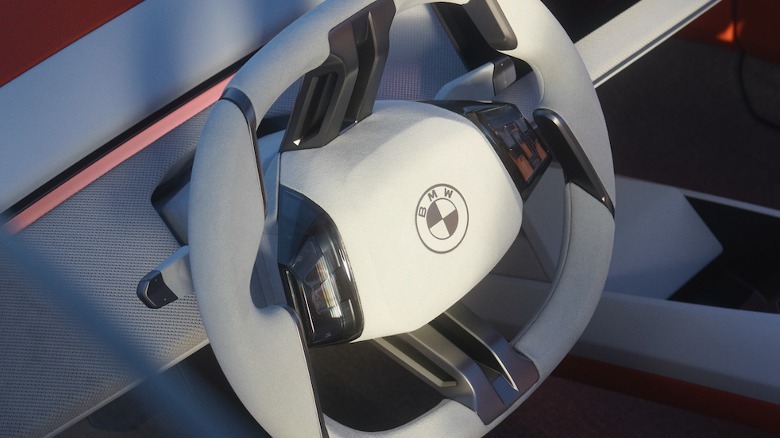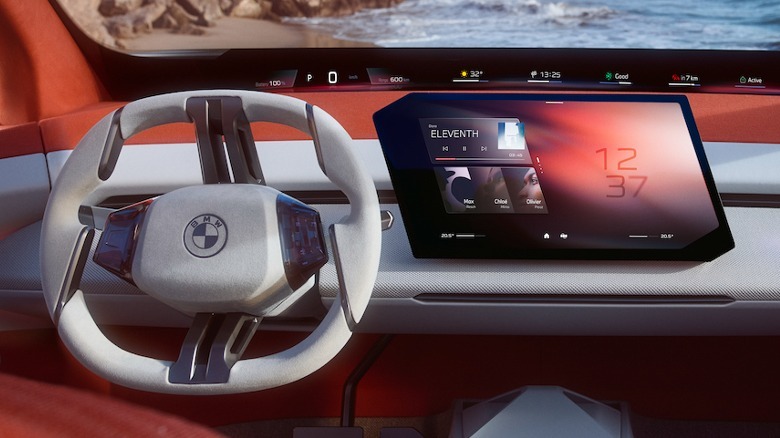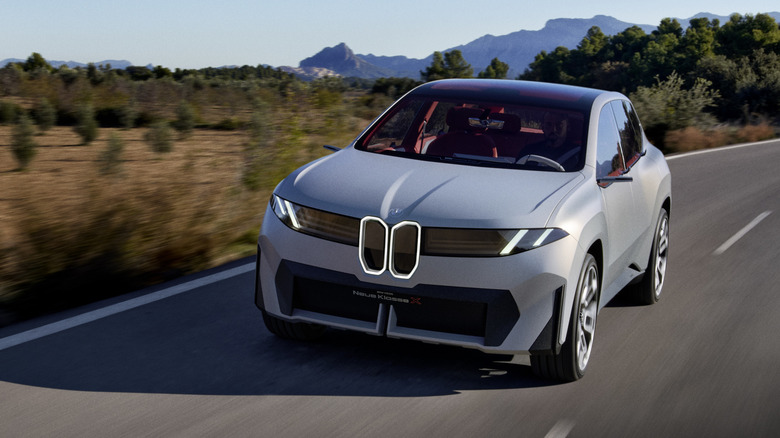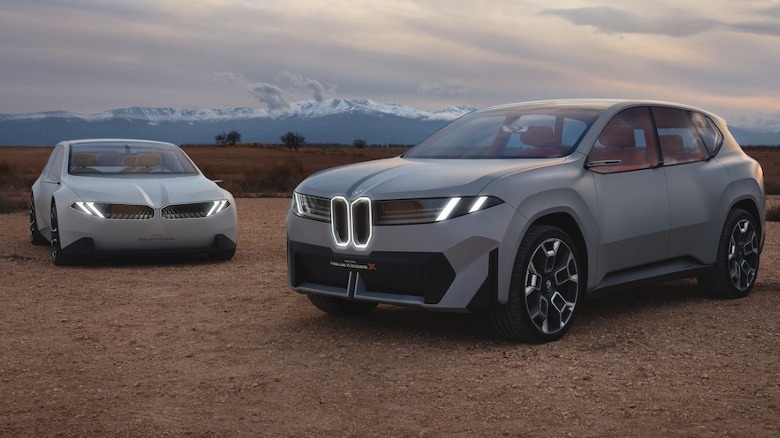BMW's Next-Gen Electric SUV Is Hiding In Plain Sight, With One Detail Fans Will Love
BMW may have teased us with retro-futuristic electric sedans, but the German automaker will be taking no chances when it launches its next-generation EVs in 2025. "It must be an X," BMW board member Jochen Holler says of the fast-approaching electric revamp's debut model, referring to the wildly popular series of SUVs that comfortably outsell its sedan, coupe, and convertible counterparts. Whetting the appetite as to just what that first model will look like is the responsibility of this, the BMW Vision Neue Klasse X.
While the new aesthetic might grab you, it's what's under the sheet metal that BMW is counting on to make its next-generation electric vehicles more competitive. Neue Klasse isn't just a model but a complete architecture that will underpin a multitude of body styles (we've already seen what a Neue Klasse sedan might look like, even if production versions don't get the fancy color-changing e-paper bodywork and wheels).
The sixth generation of BMW's eDrive electric drivetrain stands to be no slouch, either. A combination of 800-volt architecture, new e-drive units — of which up to four can be supported — and new li-ion cells with more than 20% energy density amount to up to 30% more range and up to 30% faster charging rates. BMW estimates that 10 minutes plugged into a sufficiently potent charger could be enough to add 180+ miles of range.
Smarter and subtler
It's all controlled by four new "super-brain" computers, with a tenfold increase in compute power. Though the processing may be much greater, BMW plans to simplify its advanced driver-assistance systems (ADAS) offerings, from the confusingly multitudinous options now to two main tiers. A Basic package will support the familiar Level 2 features like adaptive cruise control and lane-keeping, while a High package will add talents like Level 3 highway driving and even Level 4 automated valet parking as we've seen demonstrated before. M cars, fettled by BMW's performance division, will be distinguished with unique hardware and software.
After getting a closer look at the newest BMW concept in Lisbon, Portugal — where the automaker hosted SlashGear so we could preview the new EV platform as well as test out upcoming models like the love-it-or-hate-it M flavor of the second-generation X2 SUV and the all-electric MINI Countryman SE ALL4 — what stands out is how clean and refined it feels compared to current EVs like the iX. That "strong, monolithic shape" as Kai Lander, Head of BMW i Design, describes it, was entirely intentional, the team doing away with add-ons and flourishes. It's also markedly more aerodynamic, with 20% less drag compared to BMW's current electric SUVs.
Even some of the traditional accoutrements of "luxury" have been dialed back significantly or deleted altogether. Rather than chrome, for instance, BMW's designers use light as a method of emphasis. The upright, illuminated grille — which will be an X-exclusive signature — is arguably the best example of that, far smaller than the gaping maws familiar (and controversial) on the automaker's current SUVs. Long-time fans are probably going to appreciate the change.
Less clutter, more tech
Beyond just the corporate nose, the result feels far more modern and refined, not to mention distinct: still muscular, like SUV buyers clearly prefer, but without demanding the appearance of an additional body kit bolted on to achieve that. BMW still manages to include far more expansive glass than is trendy today, too, with the Vision Neue Klasse X having huge side windows (and a panoramic glass roof) rather than the pinched greenhouse that's de rigueur in dealerships now.
It leaves the bright — almost fluorescent — cabin of this concept SUV all the more eye-searing. Textiles span the dashboard, doors, and center console, with an array of more eco-friendly fabrics compared to leather and faux leather. Knits seemingly more akin to sportswear sit alongside wool and a minimal sprinkling of glass and metal.
The technology is both visible and woven through that new palette of materials, including backlit and embedded ambient lighting. Pride of place in the center of the dashboard is the new iDrive Central Display, a parallelogram positioned and skewed to be within easy reach of both the driver and front passenger. Gone is the iDrive wheel, retired in favor of touch- and voice-first interactions: the latter with BMW's new voice assistant, which combines local and cloud processing for natural-language recognition.
Farewell, iDrive knob
Controls on the right-side spoke of the new steering wheel — which BMW is inexplicably branding "HYPERSONX WHEEL" — will also navigate the center screen, along with controlling the six customizable widgets that can be shown on the BMW Panoramic Vision display that spans the A-pillars along the lower edge of the windshield. Finally, a 3D Head-Up Display is supported, beaming graphics with real-world interaction into the driver's line of sight.
The new iDrive interface builds on the existing UI in iDrive 8.5 and 9, on current production cars like the BMW i7 luxury electric sedan. That includes the Quick Select shortcuts and persistent access to essentials like climate control running along the bottom of the display. However, in the concept SUV, you can create your own interface from an image wirelessly transferred from your phone — BMW automatically adjusting the theme to ensure text and control legibility — or even have the Central Display cycle through Instagram photos or professional shots sourced from a digital store.
Personal Sound Experiences, meanwhile, will finesse the electronic warbling piped through the cabin using both drivetrain factors like acceleration and braking, along with a touch interface akin to Korg's DJ-friendly Kaoss Pads. Whether drivers actually want that sort of real-time soundtrack generation will — as with Mercedes and will.i.am's similarly odd MBUX Sound Drive system — remains to be seen.
Is this the Ultimate Driving Machine of EVs?
What's interesting here is the mixture of flights-of-fancy gadgetry with BMW's insistence that Vision Neue Klasse X features will be making it to the production EV. Indeed, according to design chief Kai Lander, the next electric X that shows up in dealerships will be "something very close" to this concept.
What a stationary concept car can't tell us is how Neue Klasse EVs will actually drive, and for BMW — and its "Ultimate Driving Machine" branding — that's a big deal. The engineers' argument is that faster and more efficient links between things like the brakes and the motors, with different subsystems now able to intercommunicate directly, not only make the platform more efficient but improves driving dynamics.
Making greater use of regenerative braking, for example, should help cut friction brake wear. An EV that can more precisely control the interplay between propulsion, braking, steering, and suspension settings, however, could respond to driver inputs more directly and aggressively, and communicate that back more effectively. Or, flipped over to comfort mode, prove even more adept at isolating the vehicle occupants from the hubbub outside.
While purists might sniff at an electronic interloper between them and the road, the truth is that we're far from the days when cars were purely mechanical affairs. The electric vehicle transition is inevitable. What remains to be seen is just how much of this Vision Neue Klasse X concept makes it to EVs we can actually buy when BMW kicks off production at its Debrecen plant in Hungary come 2025. Even if it's just the smaller grille, that seems like a win.
